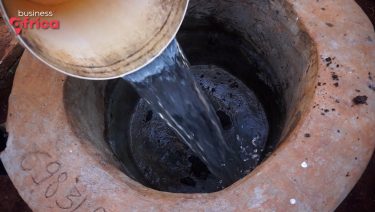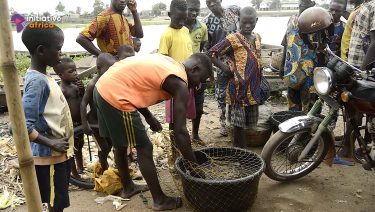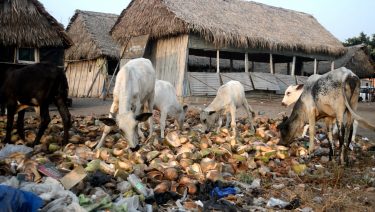Why East Africa’s glaciers are on the brink of extinction
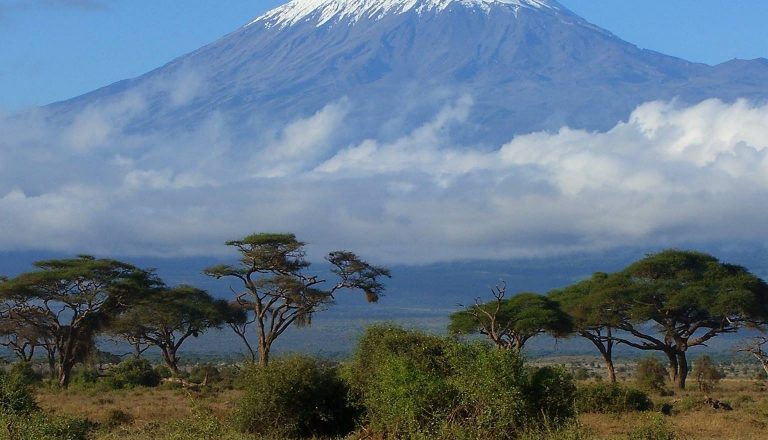
Michael Sommers
Due to climate change, East Africa’s remaining trio of tropical glaciers – on Mount Kenya, Mount Kilimanjaro, and the Rwenzori Mountains – are expected to vanish by 2040.
As world leaders, scientists, and activists gathered in Glasgow for the recent U.N. Climate Change Conference, global media was sounding the alarm about the imminent demise of East Africa’s remaining glaciers. The scintillating stuff of legends, this trio of equatorial glaciers crowning Mount Kenya, Mount Kilimanjaro, and the Rwenzori Mountains spawned the Nile River and inspired Ernest Hemingway’s classic The Snows of Kilimanjaro. Yet now, instead of a life source, these vanishing blocks of ice have become a prophetic symbol of the destruction wrought by climate change.
The “Near Future” is Imminent
“The rapid shrinking of the last remaining glaciers in eastern Africa, which are expected to melt entirely in the near future, signals the threat of imminent and irreversible change to the Earth system,” warned World Meteorological Organization’s secretary-general, Petteri Taalas, in October this year. Scientists have been tracking the melting of these glaciers for decades, but in recent years the pace has accelerated at an alarming rate. The “near future” is now surprisingly imminent; the UN predicts the glaciers will completely disappear by the 2040s.
Global warming is the major culprit in the glaciers’ untimely disappearance. Yet, surprisingly, rising air temperatures are not to blame. Rainer Prinz is a senior scientist, specializing in glaciology, at the University of Innsbruck in Austria. Having spent years studying East Africa’s glaciers, Prinz emphasizes that, unlike those at more northerly latitudes, these tropical glaciers – which sit high above the snowline (where it’s always cold, even in East Africa) – aren’t sensitive to changing air temperatures. They are, however, uniquely susceptible to changes in the amount and frequency of precipitation. Abundant snowfall is what ensures these glaciers’ survival. Apart from adding mass to the ice blocks, snow effectively reflects sunlight (instead of absorbing it) while precipitation-bearing clouds attenuate solar radiation.
With 2040 fast approaching, Prinz confesses that no human intervention can save these glaciers from impending extinction. “The only possibility is that future precipitation levels might change, even with climate change. There’s a chance that in coming years, humid tropical regions could actually see more precipitation.” Prinz explains that Kenya, Tanzania, and Uganda straddle both dry and wet tropical regions. “Based on our models, East Africa could go either way.”
Economic and Spiritual Loss
If the glaciers vanish, the biggest impacts are likely to be the less obvious ones. Contrary to popular belief, East Africa’s glaciers aren’t a source of water for the lowlands. “That’s a myth,” says Prinz. “They’re much too small. The highest precipitation rates occur in the forested areas of the highlands, which provide the largest source of water.”
The biggest loss is likely to be felt in tourism. Over the years, the spectacular paradox of gleaming ice-tipped mountains ascending from a sweltering tropical landscape has seduced many visitors to follow in the footsteps of Hemingway. Meanwhile, for local inhabitants, the most dramatic loss could be spiritual. For many, these lofty white summits are the sacred dwelling places of traditional deities. “In losing the glaciers, people will be losing a part of their spiritual life,” says Prinz.
See also

CLAYROCKSU, leading female Nigerian rock singer
She grew up singing in church and ended up fronting Nigeria’s rock scene. In this exclusive interview, Clayrocksu opens up about what it means to be a rock artist and a woman in a country dominated by Afrobeats. From her early days mixing Igbo and English lyrics, to building a community of Afro-rock musicians, she shares how music became a form of rebellion, healing, and identity. Between faith, family, and fire, her voice carries a message for all the misfits who refuse to fit in. Journalist: Sharafa

MAMADOU MBODJI: President of the African Friends of Nature Network
“Africa on the Front Lines of Climate Change: Understanding, Acting, Resisting” In this exclusive interview, Mamadou Mbodji, President of the African Friends of Nature Network, reflects on three decades of fighting for climate justice. His message: “Africa can no longer wait. There is an African emergency.” An essential exchange, full of warning and hope. Journalist: Laurence Soustras

Kerfalla Camara: From the asphalt to the stage, the circus as hope in Guinea
Making circus a lever for education and social change. Born in the streets and trained in the circus, Kerfalla Camara is now the head of Circus Baobab, Guinea's first circus company, which has become a benchmark in West Africa. In this exclusive interview, he discusses: - The rebirth of Circus Baobab, a socially engaged circus - The fight to provide education to out-of-school children - The Guinean cultural roots in each show - The courage to tackle taboo subjects, such as female genital mutilation, in their latest creation, Yongoyely A powerful account of art as a tool for emancipation and social transformation. Journalist: Alexandra Vépierre
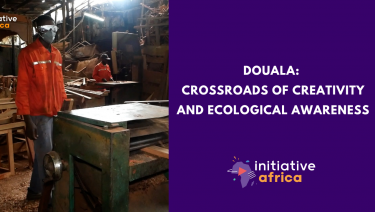
Douala: Crossroads of Creativity and Ecological Awareness
In Cameroon, the artisanal woodworking industry is taking an eco-responsible turn. Faced with increasing deforestation, some sculptors, like Jean-Claude Dongmo, are choosing to recycle abandoned materials into unique works of art. In this report filmed in Douala, discover how these artisans: - Reinvent their traditional know-how - Train young people in sustainable trades - Contribute to the preservation of Cameroon's forests An immersion at the intersection of art, knowledge transfer, and environmental commitment. Journalist: BOUNYA Maxime Farrel
